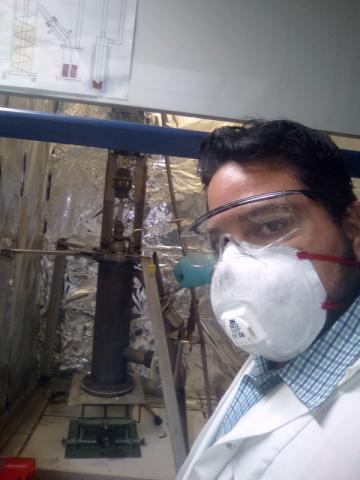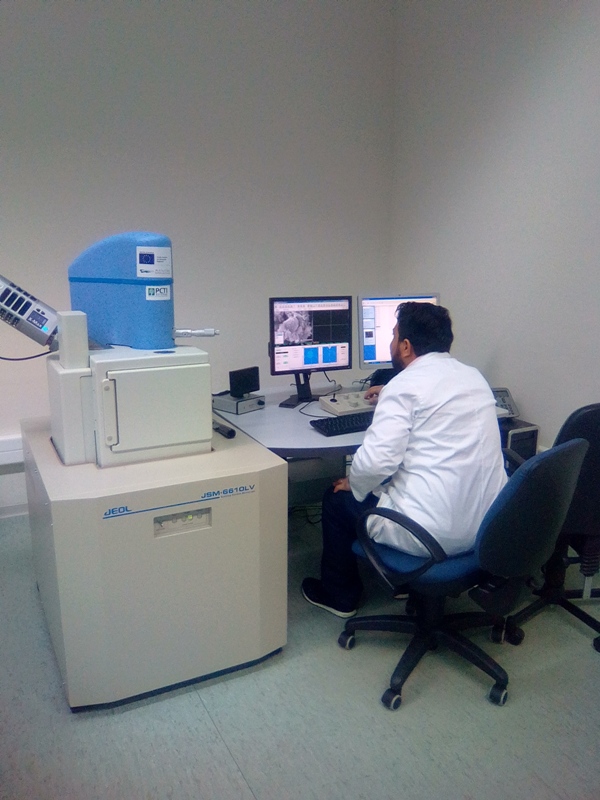
With the development of nanocompounds for the treatment of the raw sewage that pollutes the Bay of the Santiago de Cuba province, the researcher Roberto Machado García contributes, from a scientific approach, to the solution of one of the major environmental problems that the second most important bay in the country has to face nowadays.
“We attempt to have a bearing on the decrease of some industries pollutant load, which is currently being spilled over the Santiago de Cuba Bay, mainly on the elimination of pigments and artificial colors the Textile Factory “Celia Sánchez Manduley” spills- Mr. Machado stated. “This work is channeled into the waste treatment, by means of using the activated carbon as a support, enhanced by the addition of a titanium oxide nanocomposite with a high level of photo degradation. Through an advance oxidation process using this nanocomposite and solar radiation, we expect to cut down on the levels of pollution due to the artificial colors currently generated by dissimilar industries located along the Bay zone, through the Gascón River”.
In Cuba, the use of activated carbon as part of the components of the household water filter is widely known; however, its depletion within a 3 or 4 month-framework, becomes a problem. In the context of implementing its use in industrial scale projects, prolonging its lifetime cycle becomes indispensable. To accomplish such aim, “work is being carried out in terms of obtaining a compound that would be able to regenerate the active sites contained within the activated carbon, where pollutants are absorbed, specifically a photocatalyst, such as the nanometric titanium oxide- Mr. Machado pointed out. “When this nanocompound absorbs ultraviolet or visible radiation, a reaction on the pollutants located in the carbon orifice is triggered. Such reaction leads to their decomposition into CO2 and H2O. Thus, these active sites remain free for a new filtering process and, of course, their lifetime cycle is extended until at least 9 months, approximately”.
These results are foreseen to be implemented in the whole scope of the textile Cuban industry, which is likely to lessen the pollutants load that is being spilled in different locations throughout our country. According to this local researcher, such task is possible due to the fact that the activated carbon is produced from wastes, biomasses generated from several industrial processes in the country, such as: coffee and rice husks, and peanut and coconut shells. “For example, we obtain the titanium oxide from a waste in the nickel industry of Holguin. We process the discarded scrap and the final outcome is a titanium oxide with the purity level and features of those used all over the world at present”. - Mr. Machado added.
Endorsed by the Flemish Interuniversity Council VLIR-UOS of the Kingdom of Belgium, the foremost important laboratory studies are completed in this European country. “I work in a laboratory that is proper to activated carbon, and belongs to the field of Analytic Chemistry. There, we can find all the chemical reactors for the synthesis of this sort of carbon along with the equipment that is essential for the elucidation of the morphology and structure of the nanocompounds we are developing”- Mr. Machado noted.
Previously, the researcher Roberto Machado had made incursions in treating magnetic water and obtaining orthopedic plaster from wastes generated in the salt and acetylene industries (the latter has already being patented in Cuba). He expressed that “having such experience in this field of science has encouraged us to remain working and being able to treat wastes with other wastes”.
Roberto Gerardo Machado García is a member of the P5 “Energy, Biofuel and Clean Technologies for sustainable development in the eastern of Cuba.” He currently works in the Faculty of Natural and Exact Sciences of the Universidad de Oriente and the Faculty of Sciences of the University of Hasselt in Belgium. “One of the most relevant outcomes of learning is the work optimization” – Mr. Machado highlighted. “Even though research methodologies in Cuba and Belgium differ, you can always find an in-between term. I strongly believe that exchanging with Belgian scholars constitutes an important step for my training; undoubtedly, it will be to the benefit of the development of this region of the country”. 

In the Faculty of Sciences of the University of Hasselt in Belgium, Machado continues his research as part of the academic exchange promoted by the VLIR-IUC program.
During a tour around the Physical Characterization Lab, equipped by the VLIR-IUC program in the Universidad de Oriente, Machado explains the process of obtaining activated carbon, as a fundamental element of his research. Photo: Eduardo Pinto.

